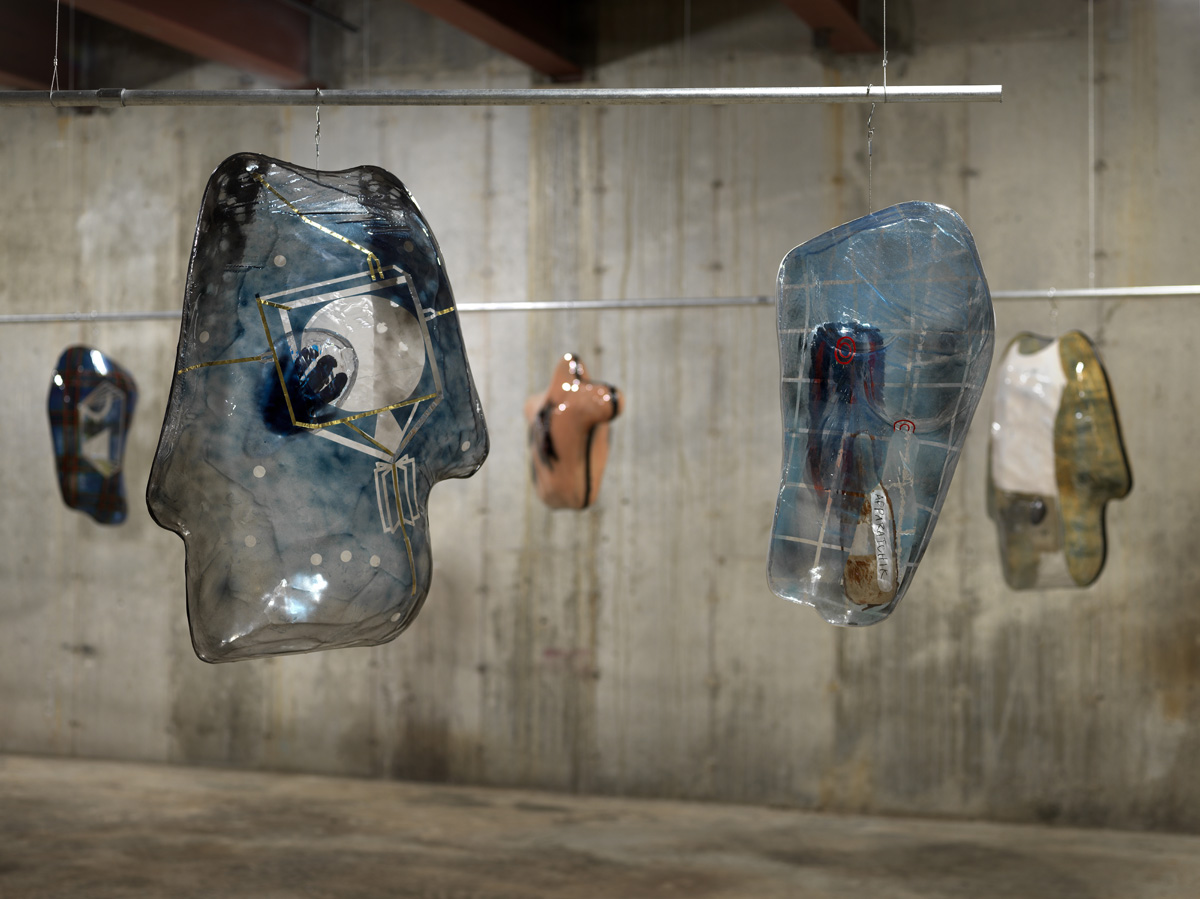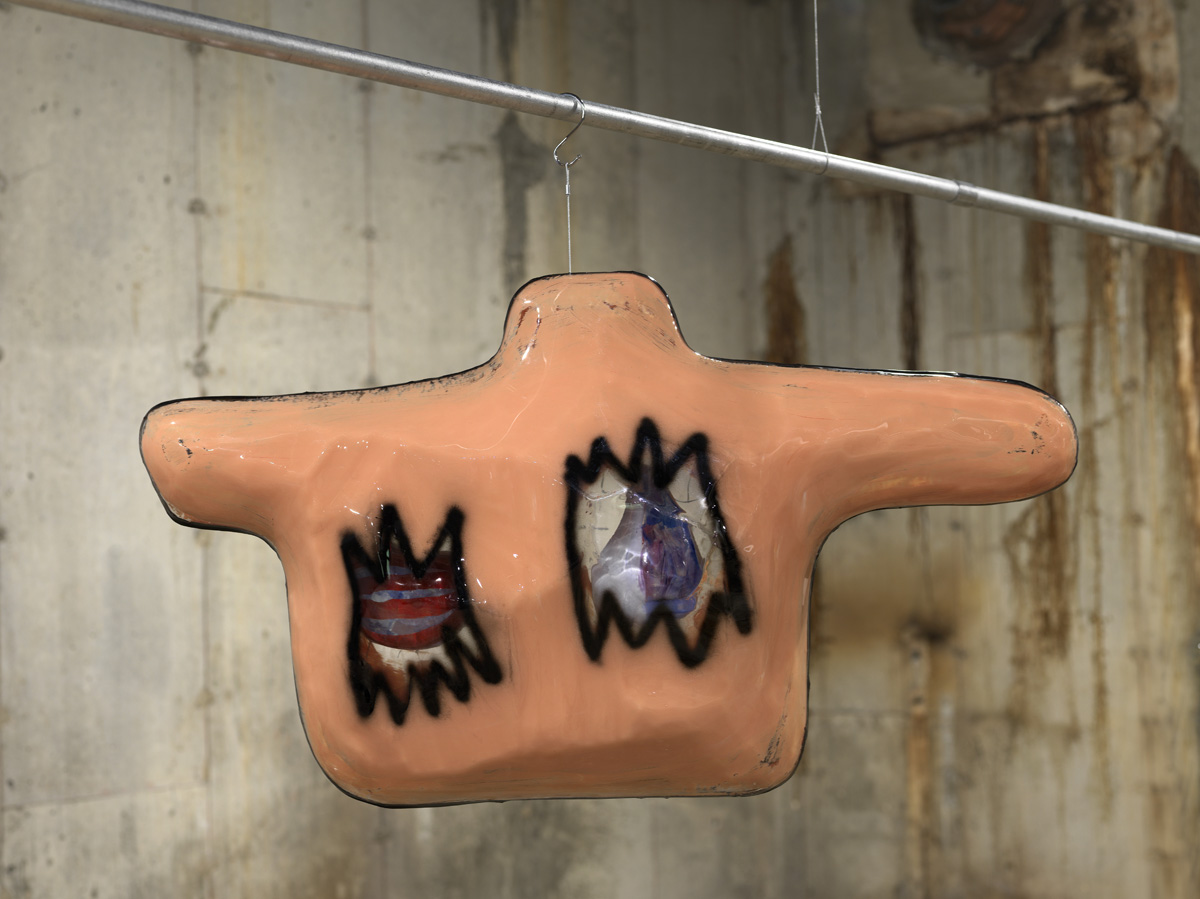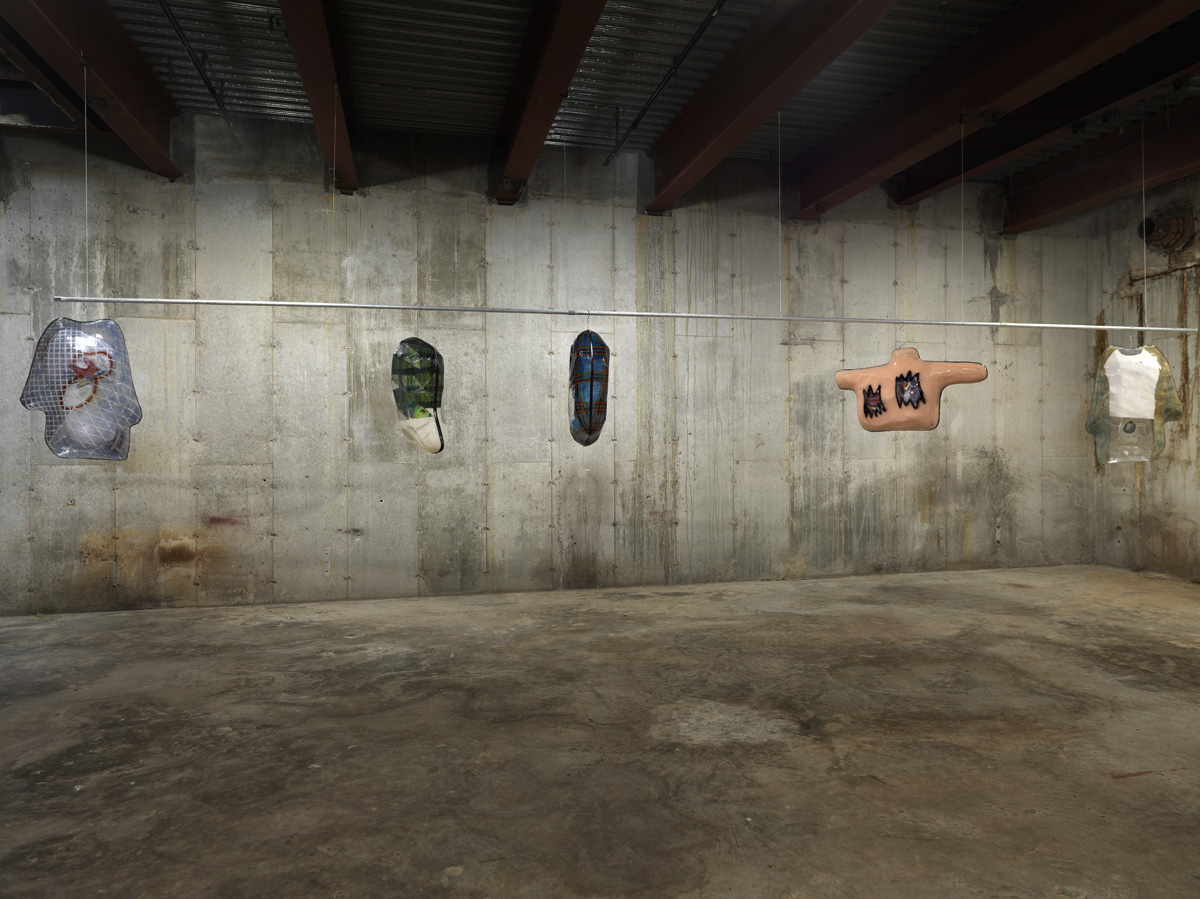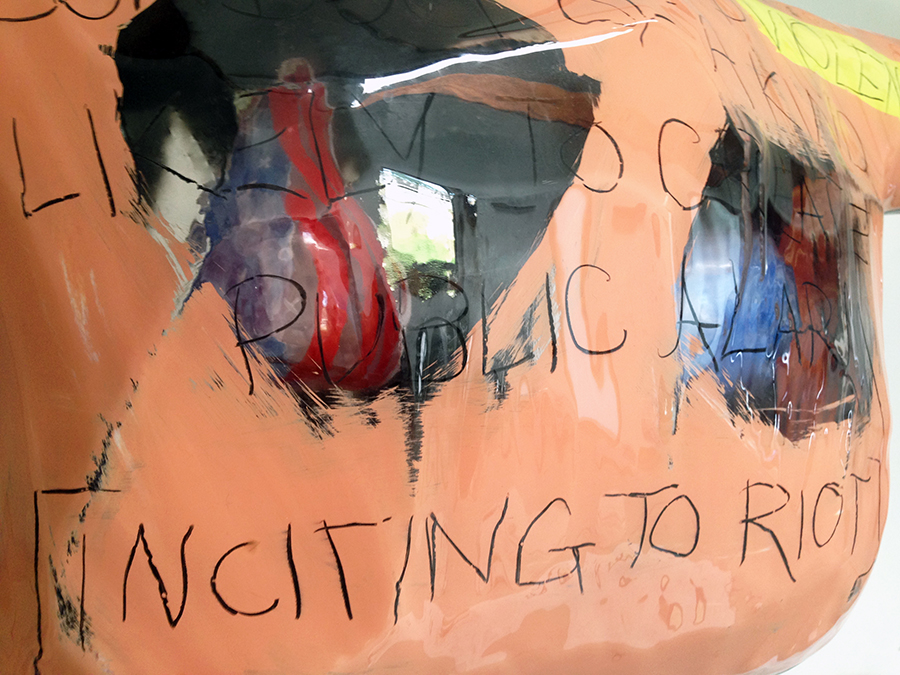
Wolfish Contour presents new works by Los Angeles-based artist Ragen Moss.
“I am testing Sculpture with this work. When I made it, I literally wrote down tests like: whether sculpture can hold/deal with climate or temperature; whether sculpture can deal with precision (it is generally treated as incapable of precision and I wonder why); and whether legal-political text can do something for/with/against sculpture. And then whether all that testing can key us into some sort of humane imagination—especially at this moment of collapse.”
The sculptures are made by hand carving large blocks with saws, knives, and other sharp tools. The carved blocks are then cast. Marks, text, and other blocking materials are then built-onto the casts.
The transparency allows for embedding: Two (or more) completely resolved and independent forms are fully embedded one inside the other so that two (or more) spatial figures actually operate within the same footprint simultaneously. This makes for a new moment in Sculpture’s way of being and of producing space.
The forms—figures, and at times, torsos—take on varying degrees of opacity/transparency and specificity via these “blocking materials”, as well as through embedding sculpture within sculpture. The moves are physical, material, linguistic, legal, conventional, political, gestural. The works are complicated bodies in space. As is the case for each of us, there are things that move right through and others that stick and stay.
The figures cannot be summed up all at once. Their “blocks” elide other avenues of transparency. They flirt with the autonomous terms of Modernism, but are in the end unwilling. They are complex objects that leave the door open for complex subjects.
The artist signals capaciousness as “the primary trait” of the work. In so doing she says: “This is sculpture that cares about roominess—about making room for something—and the way space-making is not just about emptiness in relation to a solid, but about the possibility of something happening.”







Sample citation to texts used for works:
§ 240.20. Disorderly conduct
A person is guilty of disorderly conduct when, with intent to cause public inconvenience, annoyance or alarm, or recklessly creating a risk thereof:
1. He engages in fighting or in violent, tumultuous or threatening behavior; or
2. He makes unreasonable noise; or
3. In a public place, he uses abusive or obscene language, or makes an obscene gesture; or
4. Without lawful authority, he disturbs any lawful assembly or meeting of persons; or
5. He obstructs vehicular or pedestrian traffic; or
6. He congregates with other persons in a public place and refuses to comply with a lawful order of the police to disperse; or
7. He creates a hazardous or physically offensive condition by any act which serves no legitimate purpose.
Disorderly conduct is a violation.